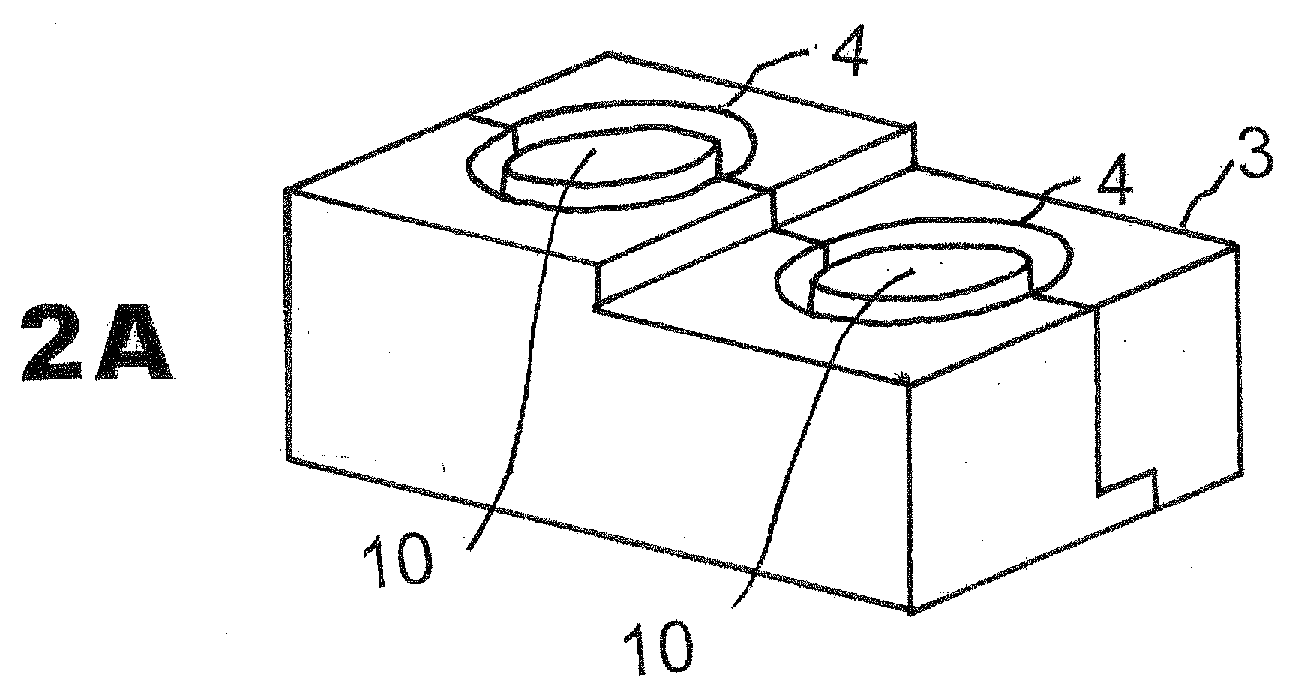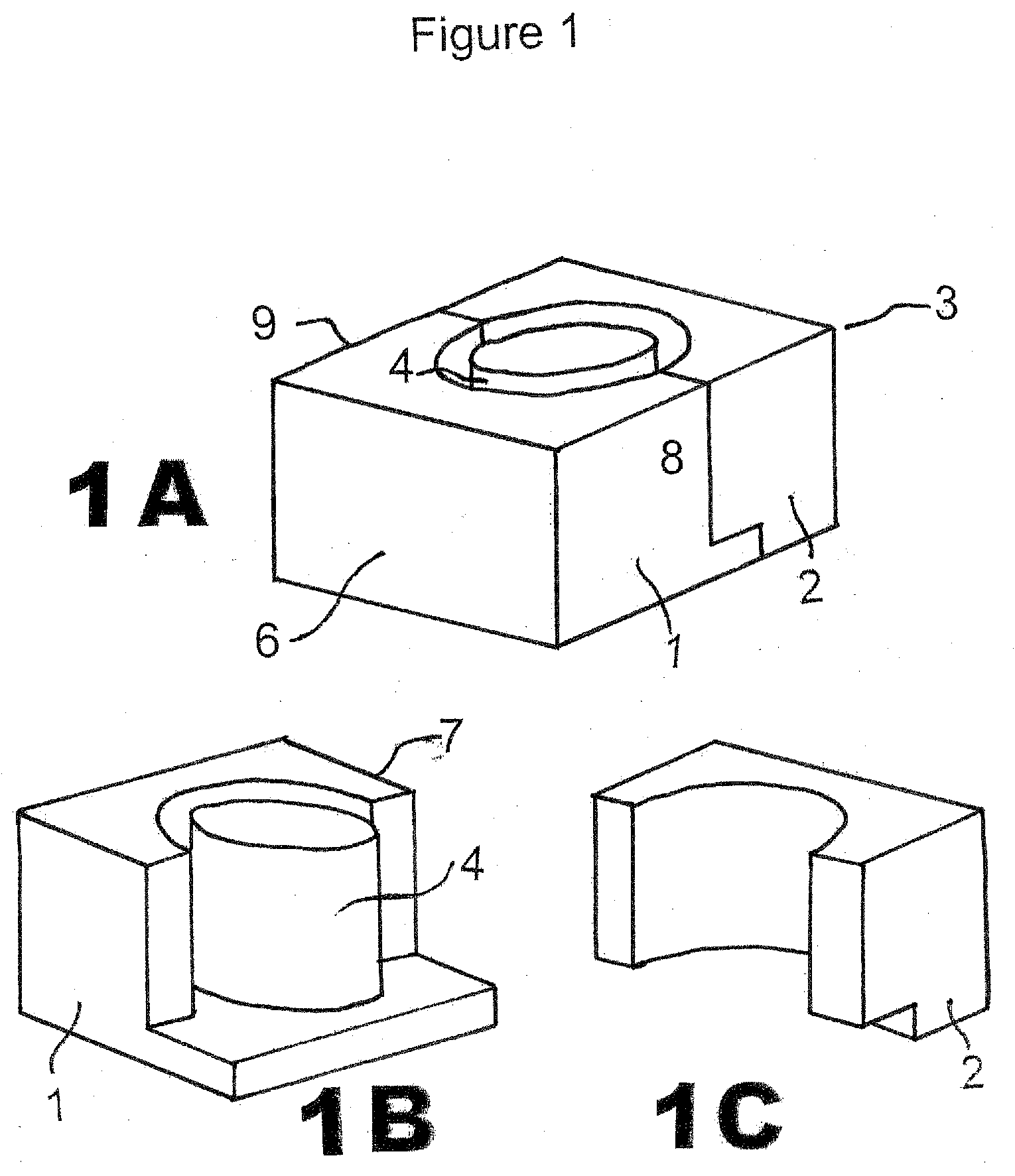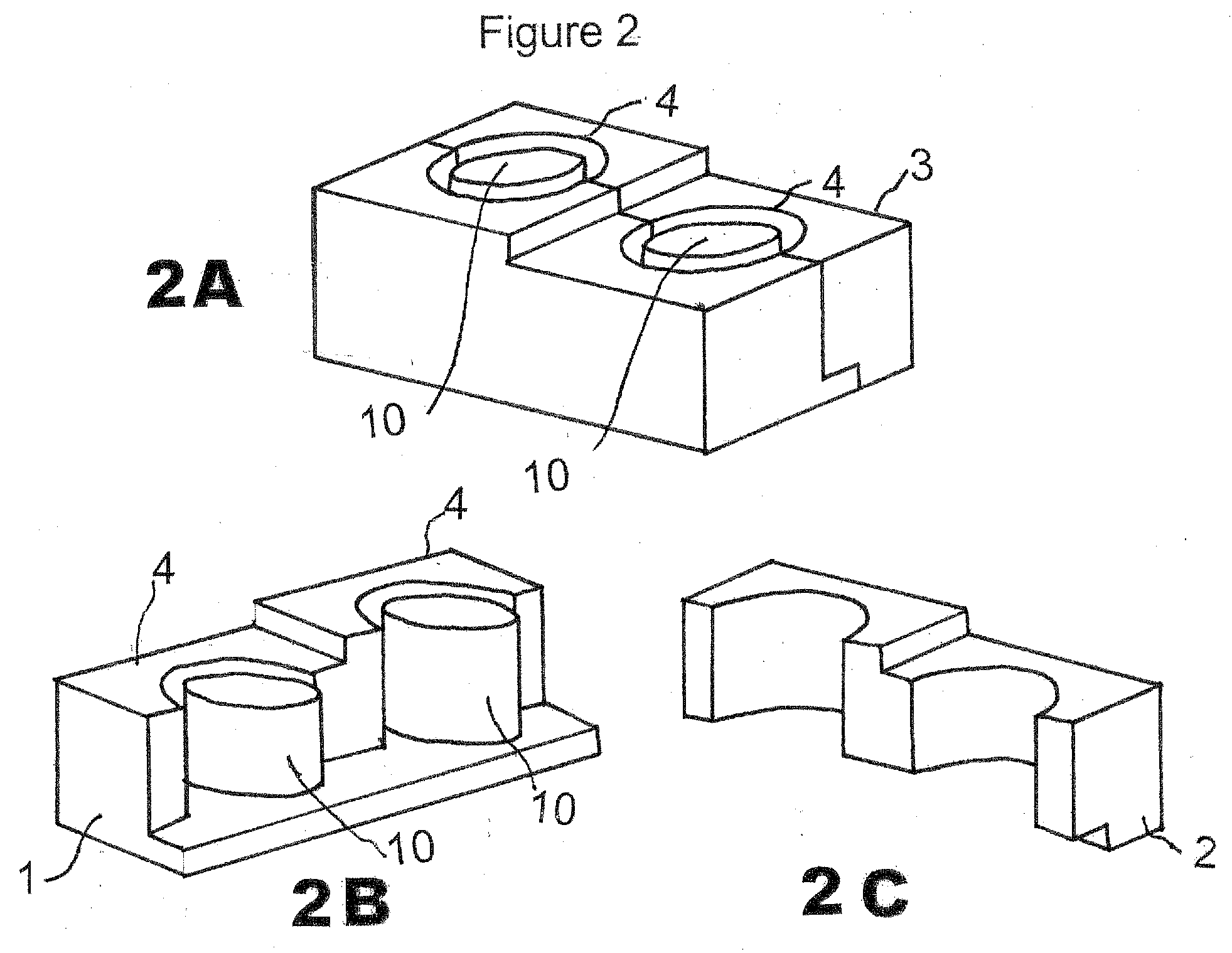Methods for molding interbody devices in situ
a technology of interbody devices and fusion devices, which is applied in the field of can solve the problems of most costly health problems in society, back pain and spine pathology, and great suffering of victims, and achieve the effect of reducing the cost of fusion devices
- Summary
- Abstract
- Description
- Claims
- Application Information
AI Technical Summary
Benefits of technology
Problems solved by technology
Method used
Image
Examples
Embodiment Construction
[0030]For purposes of the present application, CIMD can be used interchangeably with IMD. It is clear that the method and device are not limited to cervical procedures, but can be used for all relevant orthopedic and neurosurgical procedures.
[0031]The CIMD 3 is composed of two parts 1, 2 which, when combined together as shown in FIG. 1A, form a stand-alone mold which can be separated for release after hardening of the interbody spacer created in situ after separation from its inner cylinder mold 4. Generally, the CIMD has a pair of flat side faces and inner faces formed of half cavities.
[0032]FIG. 1A shows the CIMD 3 closed (parts 1 and 2 combined together by apposition). FIGS. 1B and 1C demonstrate the CIMD 3 open as part 1 (FIG. 1B) and part 2 (FIG. 1C) are separated. A form 10 is in the center of the closed CIMD so that the spacer formed is open on the inside.
[0033]Typically, the CIMD 3 when assembled includes a top wall 4, a bottom wall 5, shown in FIG. 3B, a first end wall 6, a...
PUM
| Property | Measurement | Unit |
|---|---|---|
| sizes | aaaaa | aaaaa |
| movement | aaaaa | aaaaa |
| biologically compatible | aaaaa | aaaaa |
Abstract
Description
Claims
Application Information
 Login to View More
Login to View More - R&D
- Intellectual Property
- Life Sciences
- Materials
- Tech Scout
- Unparalleled Data Quality
- Higher Quality Content
- 60% Fewer Hallucinations
Browse by: Latest US Patents, China's latest patents, Technical Efficacy Thesaurus, Application Domain, Technology Topic, Popular Technical Reports.
© 2025 PatSnap. All rights reserved.Legal|Privacy policy|Modern Slavery Act Transparency Statement|Sitemap|About US| Contact US: help@patsnap.com



